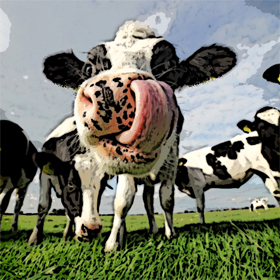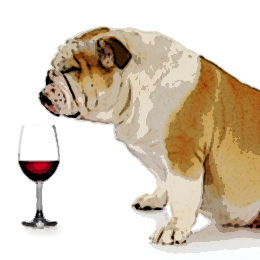Don’t Be So Sensitive; Sensory Adaptation & Wine Tasting.
Chapter Two, Part Seven.
 As a regular reader of WineSnark, you’ve learned the various ways your body perceives flavor so now you can relax, have a bite to eat and enjoy a glass of wine. Once you do however, you might as well throw all you’ve learned into the recycle bin because when you introduce new chemical compounds to your body the equation changes. By the way, my wife just loves it when she cooks all day and I tell her she’s made a delicious “chemical compound”.
As a regular reader of WineSnark, you’ve learned the various ways your body perceives flavor so now you can relax, have a bite to eat and enjoy a glass of wine. Once you do however, you might as well throw all you’ve learned into the recycle bin because when you introduce new chemical compounds to your body the equation changes. By the way, my wife just loves it when she cooks all day and I tell her she’s made a delicious “chemical compound”.
Food is just one of the many things that can affect your sensory perceptions, most of which you can control about as well as a bad comb-over on a windy day.
Read MoreFlavor. Taste Is Only Half Of It.
Chapter Two, Part Six.
 Have you ever wondered how your palate is capable of identifying so many different flavors in food and wine since your taste buds are limited to just five basic stimulants? If your taste buds are only capable of discerning sweet, sour, salt, bitter and umami, why are wine reviews so wordy and wine magazines so thick? (Yeah I know, it takes a lot of ads to earn 90 points).
Have you ever wondered how your palate is capable of identifying so many different flavors in food and wine since your taste buds are limited to just five basic stimulants? If your taste buds are only capable of discerning sweet, sour, salt, bitter and umami, why are wine reviews so wordy and wine magazines so thick? (Yeah I know, it takes a lot of ads to earn 90 points).
Your taste buds may be limited, but deciphering flavor employs much more than your sense of taste. It’s the synergistic work of olfaction and gustation that unite to interpret flavor. This phenomenon is commonly called gusfaction. I’m sorry but I can’t help myself, I like to combine big words because I don’t get paid by the word – I get paid by the punctuation mark (which is why I end every paragraph with parenthesis).
Read MoreYou Know Sweet, Sour, Salt, & Bitter, But Who’s Umami?
Chapter Two, Part Five.
 Experts have long believed you only perceive four tastes – sweet, sour, salt and bitter – but another taste was identified in Japan over 100 years ago that has only recently gained acceptance in gustatory circles worldwide. Umami is a subtle taste that’s easily masked by more assertive flavors. It is best described as meaty, satisfying and rich, which sounds kind of like the perfect date.
Experts have long believed you only perceive four tastes – sweet, sour, salt and bitter – but another taste was identified in Japan over 100 years ago that has only recently gained acceptance in gustatory circles worldwide. Umami is a subtle taste that’s easily masked by more assertive flavors. It is best described as meaty, satisfying and rich, which sounds kind of like the perfect date.
Western palates are generally unaccustomed to recognizing umami so don’t lose any sleep if you find it illusive. When I first learned of umami I undertook a grueling exploration that increased the scope of my taste nearly as much as it increased the scope of my waist. Believe me, it’s not the first time I’ve had to buy a few belts for this blog.
Read MoreGet In Touch With Texture; Tannin Versus Dryness.
Chapter Two, Part Three.
 Texture is paramount to appreciating wine so I put a great deal of emphasis on deciphering its tactile sensations. When describing wine make note not just of the aroma and taste, but of how the wine feels. Now I know a lot of you guys get a little queasy talking about your feelings, so I promise to get through this quickly, even if it takes all night.
Texture is paramount to appreciating wine so I put a great deal of emphasis on deciphering its tactile sensations. When describing wine make note not just of the aroma and taste, but of how the wine feels. Now I know a lot of you guys get a little queasy talking about your feelings, so I promise to get through this quickly, even if it takes all night.
Wines come in a variety of textures, some of which will appeal to you, and some of which will not. When you first taste wine ask yourself “How do I describe the texture of this wine?” Does it feel harsh or silky? Is it lean and austere or rich and flamboyant? Do you find it thin or fat, wimpy or muscular? The weight of wine is also perceived by your sense of touch. Does the wine feel light or heavy in your mouth?
Many wines are described as crisp in texture. You may like that quality in a Pinot Grigio or a $100 bill but dislike it in Grenache. Other wines are said to be creamy. Once again, this may be a desirable trait for Merlot or some Chardonnays but creamy is not a trait you look for in Navy seals or Grüner Veltliner.
Read MoreThere’s No Accounting For Taste.
Chapter Two, Part Four.
 Imagine you’re sitting at a desert resort when you spot a man dragging his haggard body across the sand. The tattered remains of his clothes cling to his emaciated body. His face is covered by a week-old beard. He looks up at you pleadingly.
Imagine you’re sitting at a desert resort when you spot a man dragging his haggard body across the sand. The tattered remains of his clothes cling to his emaciated body. His face is covered by a week-old beard. He looks up at you pleadingly.
“Good Lord man!” you cry. “You must be thirsty. Here, have some wine!”
In a raspy voice he croaks, “How many points did it score?”
Now I don’t want to get off on a rant about the wine rating system, but have you ever noticed that a wine that tastes great to The Wine Spectator or The Wine Advocate doesn’t always taste so great to you?
Read MoreThe Nose Knows.
Chapter Two, Part Two.
 The most revealing aspect of wine analysis comes from olfaction, the sense of smell. Odorants are sensed by olfactory receptor neurons in the nose, or as they’re more commonly called, smell buds. O.K., I just made that up. They’re not really called smell buds, but it’s my blog and I’ll call them whatever I want. Besides, olfactory receptor neuron sounds like some kind of hi-tech weapon used to deduce wines complex aromas, you know, one of those weapons of mass deduction.
The most revealing aspect of wine analysis comes from olfaction, the sense of smell. Odorants are sensed by olfactory receptor neurons in the nose, or as they’re more commonly called, smell buds. O.K., I just made that up. They’re not really called smell buds, but it’s my blog and I’ll call them whatever I want. Besides, olfactory receptor neuron sounds like some kind of hi-tech weapon used to deduce wines complex aromas, you know, one of those weapons of mass deduction.
Humans possess about 40 million smell buds. To put that in perspective your average dog has about 68 billion smell buds, yet oddly enough there are only a couple of dogs writing for The Wine Spectator.
Read More




















